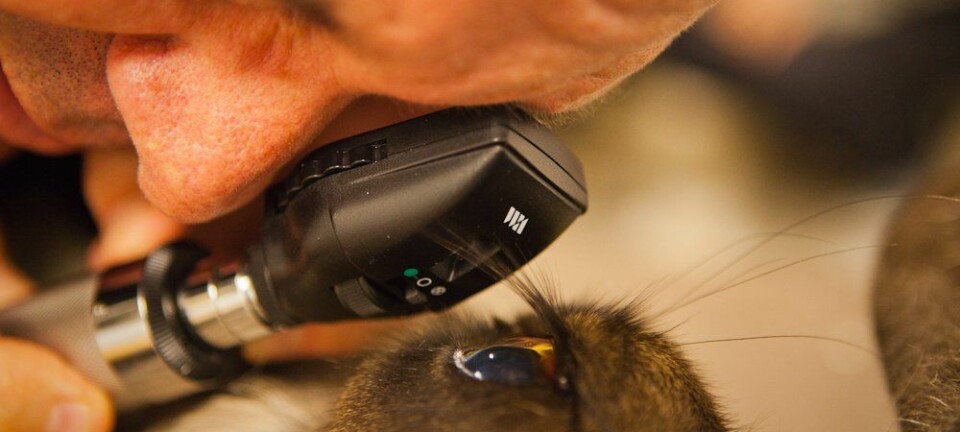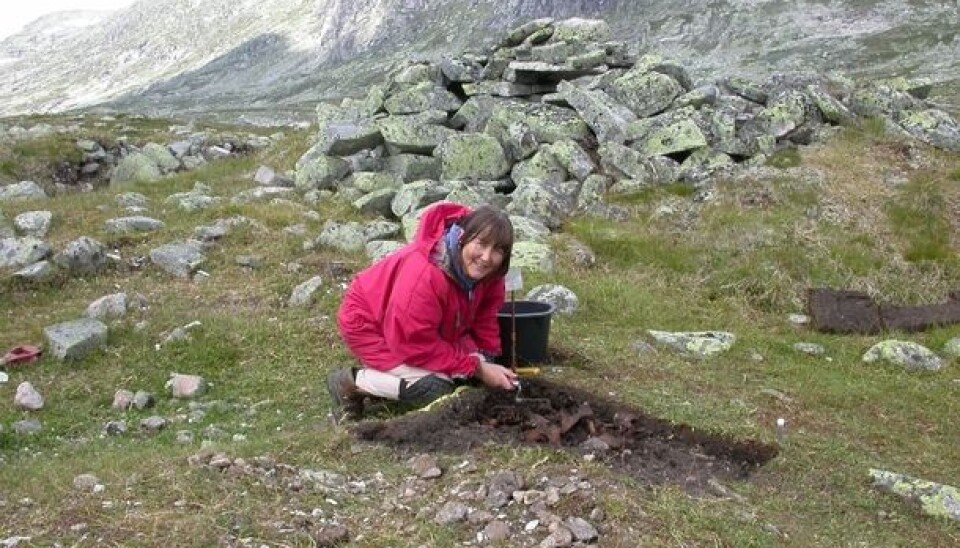
The great reindeer slaughter
Under a thin carpet of sparse mountain vegetation lie the remains of an extensive massacre of animals. The 700-year-old rubbish heaps contain hundreds of thousands of bones.
Denne artikkelen er over ti år gammel og kan inneholde utdatert informasjon.
The massive slaughter occurred at the end of the 13th century and as many as 10,000 – maybe even 20,000 – reindeer were killed in less than 50 years.
This was too large-scale to have been carried out by locals from around the mountain plateau.
"We think this was organised from one of the larger cities − Bergen or Oslo,” says Svein Indrelid, head of department at the University Museum of Bergen.
Indrelid is leading a multidisciplinary research project that aims to reveal more of the history behind the heaps of bones and the seven or eight ruins of buildings in the area around the three lakes on the Hardanger Plateau.
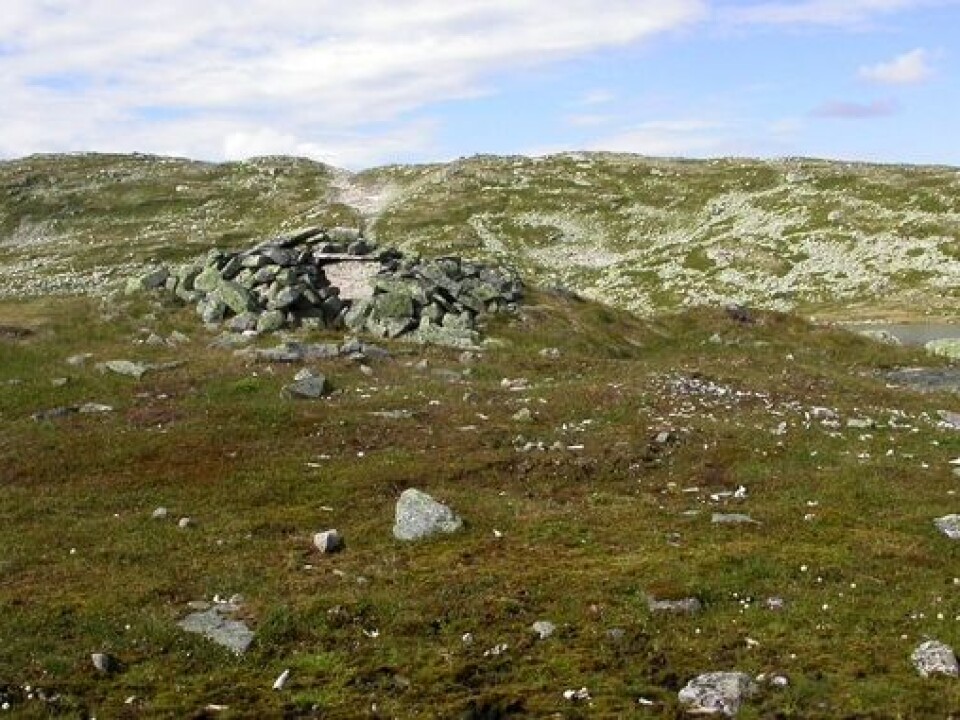
200 tonnes of meat
The researchers have fairly precise datings on the bones and are beginning to get a good idea of the number of animals that were butchered up on the mountain plateau. But several questions await answers:
Who was it who hunted these reindeer? What happened to the estimated 200 tonnes of meat this yielded? And where are the antlers, which are almost totally missing from the heaps of bones?
Apart from the bones and the stone foundations from huts that are 700 to 800 years old, little testifies to this carnage from the end of the Middle Ages.
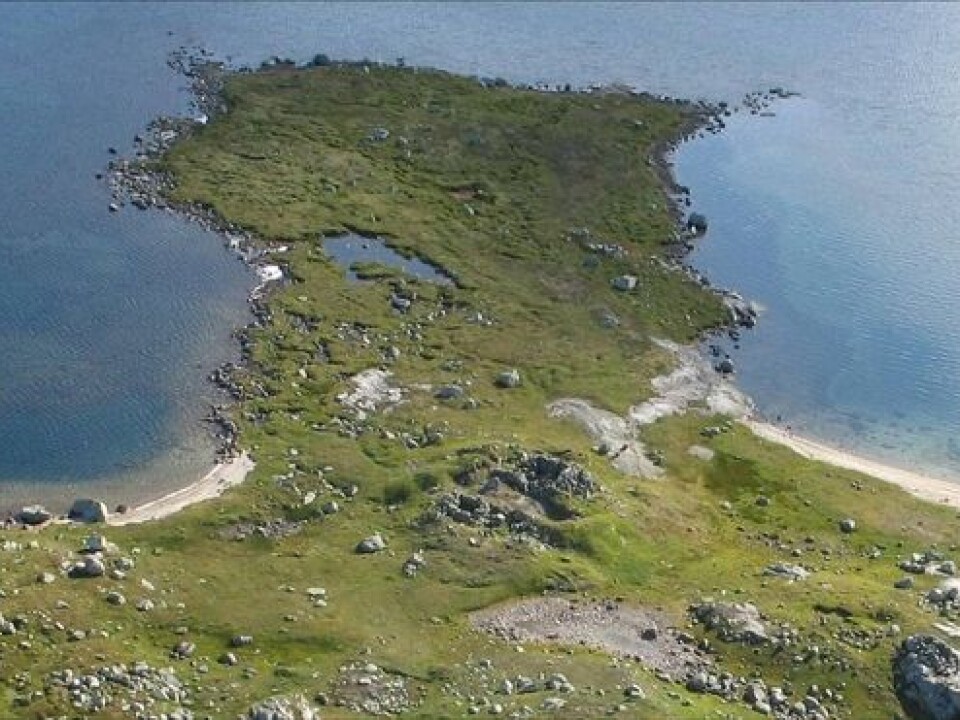
There are some boat rivets, a bone knife, a bone label and a few fragments of antlers inscribed with runic letters. Also a comb made of reindeer bone, a couple of arrowheads and a few small tools in iron, bone and antler. That’s all.
An old legend
“We’ve searched for accounts in old texts but we can’t find anything,” says Indrelid.
There’s a general scarcity of written material from this era regarding hunting and trapping in the mountains, and not a word about this activity on the Hardanger Plateau.
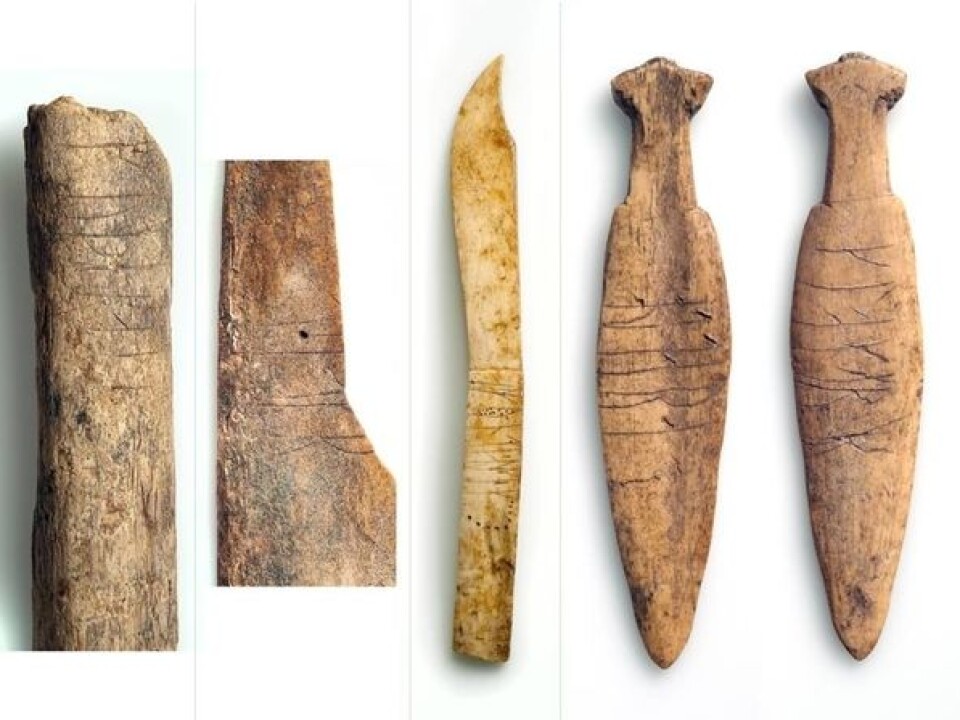
“Maybe it’s because there was no conflict involved here. That’s a common reason for something getting put into writing,” Indrelid explains.
Still, some information has filtered down through the centuries. There’s an old legend in the area about what happened at the lake Finnsbergvatnet on the plateau.
In the old days hunters drove flocks of reindeer into the lake. Long rows of cairns and posts with ropes stretched between them led the animals into the water, where they were forced to swim. But hunters awaited them in boats and clubbed them to death, according to legend.
This is consistent with the archaeological evidence.
Boat rivets
A number of metal rivets for boats have been found at a flat spit stretching into the lake, which was devoid of fish until 1927.
"There must have been a reason for people to go to all the trouble of hauling boats way up the mountain. We have also found traces of cairn rows,” says Indrelid.
The two largest building foundations and piles of bones have been found on the spit. Indrelid thinks this gives credence to the legend.
The animals must have been killed in the water and dragged up onto land to be butchered. The bones were stripped of meat on site, and from there it was hauled away, along with the antlers and hides.
Indrelid thinks that coping with so much booty from the hunt required a well-organised system. It had to be administered by people with clout and funded with capital from the cities, or from others who had more resources than the peasants in the vicinity.
Continental combs
“I suspect that Bergen was played a crucial role here. It was the residence of a king at the time and it was a big city with people who could organise it all,” says the researcher.
The artefacts with runic writing also point toward the involvement of city folk. As a rule the locals on or near the plateau were illiterate.
Even though local people must have contributed with their expertise in trapping reindeer, and probably did most of the work driving the animals into the lake and butchering them, it’s not likely that they initiated the massive slaughters on their own.
But finding solid proof of this is no easy task.
Excavations at the old wharf “Bryggen” in Bergen haven’t yielded any reindeer bones. It would appear that reindeer meat seldom made it to the dinner tables of Bergen in Medieval times.
“But because bones were left on the high plateau the discoveries in the city reveal nothing about the large quantities of meat from the mountains that were hauled to the cities,” says Indrelid.
Several findings of reindeer bone combs have been found in cities of Norway, the Baltic countries, Germany, England and Scotland. Maybe these came from the Hardanger Plateau?
New DNA analysis techniques have evolved in recent years that could provide some answers. But that would require extracting material from these precious artefacts.
Researchers have so far restricted themselves to analyzing remnants of antlers that have been found in the cities.
Missing ribs
Much is still unknown about the reindeer bonanza on the Hardanger plateau in the 1200s. For instance, why did it so suddenly come to a halt?
Most likely the hunt decimated stocks to a point where a large-scale slaughter was no longer possible or profitable. But other factors could also have been at play. Maybe the migration paths of the reindeer changed and they could no longer be driven into the lake.
Another mystery is what happened to all the ribs of the butchered reindeer. Rib bones are of little use as raw materials for combs or other tools. But there are surprisingly few of them on the plateau.
“They might have been used in making packsaddles,” Indrelid speculates.
Packsaddles would have been mounted on animals, for instance horses.
“The meat, hides and antlers must have been hauled down from the mountains with pack horses. A packsaddle was made by fastening snowshoe-like supports on either side of the load to keep it in place. They might have used the reindeer ribs in the same way.”
This would have also provided people with the meat between the ribs. It would have been far too time-consuming to cut such meat loose on the plateau.
“But we’re not likely to find out,” says Indrelid with a smile.
“Unless of course we dig up an entire horse with its packsaddle and everything intact.”
------------------------------------------------------------------
Read the article in Norwegian at forskning.no
Translated by: Glenn Ostling
Scientific links
- S. Indrelid, A.K. Hufthammer, Medieval mass trapping of reindeer at the Hardangervidda mountain plateau, South Norway, Quaternary International, 2011, vol 238, pp 44-54. (Abstract)
- A. K. Hufthammer, O. F. Bratbak, S. Indrelid, A study of bone remains and butchery patterns from medieval mass-hunting of reindeer in the South Norwegian mountain districts, Quaternary International, 2011, vol 238, s 55-62 (Abstract)







